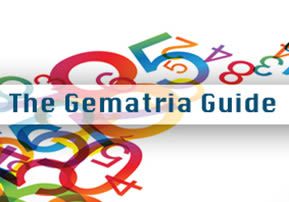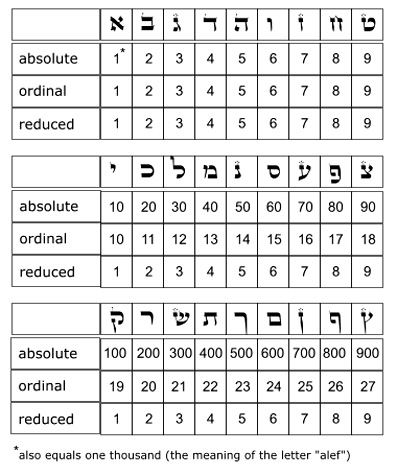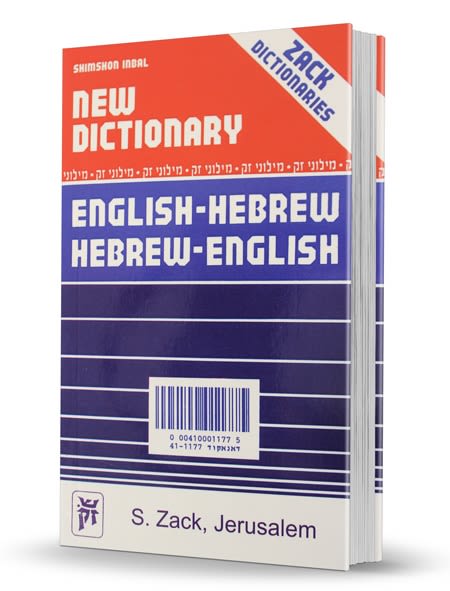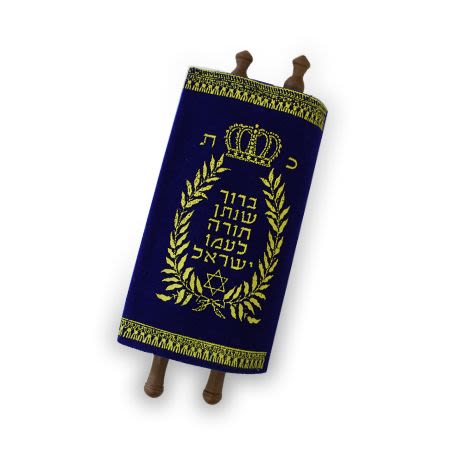
The Gematria Guide
If you’re one of those people that never really understood how to compute Gematria and unlock the secrets of Torah, this article is just for you…

If you’re one of those people that never really understood how to compute Gematria and unlock the secrets of Torah, this article is just for you.
Four Methods for Computing Gematria
1. Absolute value, (in Hebrew: mispar hechrachi) also known as Normative value:
Each letter is given the value of its accepted numerical equivalent alef (the first letter) equals 1, beit (the second letter) equals 2, and so on. The tenth letter, yud is numerically equivalent to 10, and successive letters equal 20, 30, 40, and so on. The letter kuf near the end of the alphabet, equals 100; and the last letter, tav equals 400.
In this reckoning, the letters chaf sofiet (final chaf), mem sofiet, nun sofiet, pei sofiet, and tzadik sofiet which are the “final forms” of the letters chaf, mem, nun, pei,and tzadik, used when these letters conclude a word, generally are given the same numerical equivalent of the standard form of the letter. However, sometimes the final chaf is considered equivalent to 500, the final mem to 600, etc. (see chart below).
Following that alternate form of reckoning, the Hebrew alphabet is a complete cycle. The final tzadik equals 900 and thus, the alef equals both one and one thousand. Indeed, in Hebrew the same spelling is used for the name of the letter alef, and elef, meaning “one thousand.”
Noting this phenomenon, Rabbi Avraham Abulafia interprets the verse (Deuteronomy 32:30): “How can one pursue one thousand!” to mean: One, the first number, follows after one thousand in a complete and perfect cycle.
2. Ordinal value(in Hebrew: mispar siduri):
Each of the 22 letters is given an equivalent from one to twenty-two. For example, alef equals 1, kaf equals 11, taf = 22. The final kaf equals 23, and final tzadik equal 27.
3. Reduced value(in Hebrew: mispar katan, modulus 9 in mathematical terminology):
Each letter is reduced to a figure of one digit. For example, in this reckoning, alef equals 1, yud equals 10, kuf equals 100) would all have a numerical value of 1; beit equals 2, kaf equals 20, and reish equals 200 would all have a numerical value of 2, and so on. Thus, the letters have only nine equivalents, rather than twenty-two.
In both the Ordinal and Reduced reckonings, the five letters whose form changes when they conclude a word are generally equivalent to their value when they appear within a word. However, they are sometimes given an independent value. For example, the ordinal value of the final nun is at times considered 14, and is at times, 25. Similarly, its reduced value is at times 5, and at other times, 7.
4. Integral Reduced Value(in Hebrew, mispar katan mispari):
In this fourth method, the total numerical value of a word is reduced to one digit. Should the sum of these numbers exceed 9, the integer values of the total are repeatedly added to each other to produce a single-digit figure. The same value will be arrived at regardless of whether it is the absolute values, the ordinal values, or the reduced values that are being counted.
Gematria Examples
The Hebrew word, chesed (“loving kindness”) (spelled: chet, samech, dalet) has three letters. The absolute or normative value of chet is 8, that of samech is 60, and that of dalet is 4. The sum of these three figures is 72. Thus, the integral reduced value is 9.
Similarly, the ordinal value of chet is 8, that of samech is 15, and that of dalet is 4. The sum of these three figures is 27. Thus, the integral reduced value is again 9.
Finally, the reduced value of chet is 8, that of samech is 6 and that of dalet is 4. The sum of these three figures is 18. Again, integral reduced value is 9.
Another example: the word chen, “grace,” (spelled: chet, nun) is often used as an appellation for the Kabbalah. Its absolute value is 58 (chet equals 8, nun equals 50), or 708 when nun is given an independent value of 700.
Its ordinal value is 22 (chet equals 8, nun equals 14), according to the normal reckoning, or 33 when the nun is assigned a value of 25.
Its reduced value is 13 (chet equals 8, nun equals 5), or 15 if the nun is assigned an independent value.
Its integral reduced value is 4 or 6.
Gematria Tables

***
Reprinted with courtesy of www.inner.org/












10/27/2020
Gematria is the calculation of the numerical equivalence of letters, words, or phrases, and, on that basis, gaining, insight into interrelation of different concepts and exploring the interrelationship between words and ideas. gematrix.org